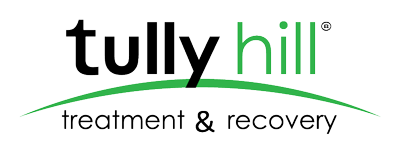Substance use disorders are the primary focus of treatment at Tully Hill. However, there are times when patients enter into treatment with coexisting eating disorders. When a patient is suffering from an eating disorder as well as an addiction there are a number of physical and psychological factors that need to be accounted for.
Physical and Psychological Factors
Individuals presenting with the eating disorders of anorexia, nervosa and bulimia nervosa have an excessive preoccupation with, or fear of, being overweight. Those with anorexia tend to severely limit their caloric intake and/or exercise excessively in an attempt to burn away calories. Anorexics tend to be underweight and may exhibit evidence of malnutrition. Bulimics, on the other hand, are typically more normal in weight and attempt to prevent weight gain by engaging in periods of starvation or eating then purging (intentional vomiting after food intake). Both groups, bulimics and anorexics, may also misuse appetite suppressants, laxatives or diuretics which often compound the problem.
Many studies have found a high rate of addiction in people with eating disorders especially when an individual has a personality disorder as well. It has also been found that bulimia is more likely than anorexia to be diagnosed in individuals with both an eating disorder and addiction. Of note, the use of cocaine seems to be most commonly associated with a concomitant eating disorder while opioid abuse seems least commonly associated with a coexistent eating disorder, especially in women. Furthermore, alcoholics did have a slightly higher than expected rate of eating disorders, mainly bulimia, in both men and women.
Eating disorders may, and often do, have very significant physical complications. These complications include but are not limited to malnutrition, anemia, dental problems, heart rhythm abnormalities, heart valve abnormalities, electrolyte imbalances, gastrointestinal problems, dehydration, fatigue, weakness, difficulties with concentration, osteoporosis and menstrual irregularities.
Treatment
As with substance use disorders, there are therapies for eating disorders. At Tully Hill, though substance use disorders are the primary focus of treatment, when eating disorders coexist, they are addressed and managed per the following protocols…
- Eating disorders are identified via our screening process and confirmed during evaluation and admission RN assessment, and documented in the initial chart components – nursing and clinical are subsequently apprised of any such patient condition
- Patients with eating disorders sign a ‘Contract for Nutritional Intake Disorders’ that outlines some terms and conditions while they are in treatment; patients’ eating disorders are made part of their clinical treatment plans
- Individual nutrition therapy is devised, ordered, and overseen by our medical director or a physician or qualified designee acting on his behalf
- General and specific medical and clinical monitoring of patients with the disorder occurs, including kitchen staff monitoring eating disorder patients’ eating habits and food choices, and communicating same to appropriate staff
- No bathroom visits or isolation is allowed with such patients within 1 hr after meals/snacks
- If such a visit is necessary in this time frame, patients will be accompanied by staff or a staff designee
- Any and all laxative use is permitted only via medical directive, dependent upon patient case/status
These protocols help the medical and clinical team safely monitor the health of our patients. Through the use of evidence-based treatment approaches, the qualified professional staff at Tully Hill provide hope for the future and focus on teaching the skills needed to achieve a healthy lifestyle.








